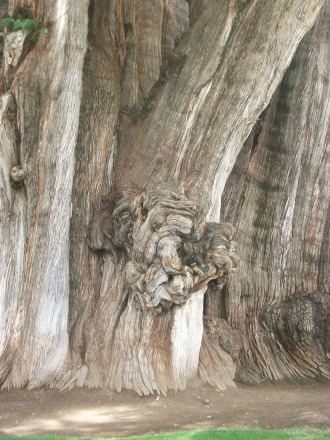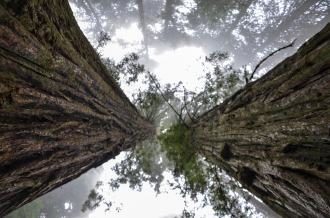Measuring The Largest Trees
By Ilana Stein – In a world where size matters, the question of the largest tree in the world is a good one. But how do we measure trees? Is the biggest tree the widest tree? The tallest tree? Perhaps it is the volume of the tree’s trunk?
The Largest Species of Trees on Earth
Trees are impressive. They can live for longer and grow larger than anything around them, but also support many species. One tree can generate enough oxygen for four people to breathe (Blackwell, The Life and Love of Trees).
A number of species have the tallest trees in the world: the sequoia family has a number of members, from the giant sequoia (Sequoiadendron giganteum) to the coast redwood (Sequoia sempervirens). Many of these giants are located in Sequoia National Park.
Many of the world’s tallest trees are also the longest lived. The age of a number of the giant sequoias have been calculated to be over 3,000 years old!
The Tallest Trees in the world
The largest tree – in the sense of the tallest known tree – in the world is a coast redwood (Sequoia sempervirens) located in the Redwoods State Park in California. Called Hyperion it stands at an enormous 380 feet / 115 meters tall. Its exact location is kept a secret to protect it from loggers.
The second tallest is in the Danum Valley Conservation Area, Asia. This is the yellow meranti (Shorea faguetiana) which is 331 feet / 100.8 meters tall.
This is followed by a mountain ash (Eucalyptus regnans) in Tasmania, Australia at 330 feet / 100 meters. This mountain ash, known as Centurion, is also considered the ‘luckiest’ tree in the world, as it narrowly missed being burnt down in 2019.
Under the 100-meter mark but still impressive are two trees in California: a coast Douglas fir (Pseudotsuga menziesii) at a ‘mere’ 327 feet / 99.7 meters tall and a Sitka spruce (Picea sitchensis) at 317 feet / 96.7 meters tall. The latter giant lives in Prairie Creek Redwoods State Park. Sadly, many of the great spruce forests native to the western United States have been logged to oblivion.
The Largest Tree in the World
The biggest tree in the world in terms of volume, officially, is a giant sequoia (Sequoiadendron giganteum) found in Sequoia National Park, California. Popularly known as General Sherman, this tree has a wood volume of 52,500 cubic feet / 1,486 cubic meters – now that’s a big tree!
The Widest Trunk in the World
The widest tree is one that has the largest girth or diameter. While this honour belongs to the baobab as a species, the tree with the largest girth is a Montezuma cypress (Taxodium mucronatum) in Mexico. Measurements of its trunk give it a diameter of 38.1 feet / 11.62 meters. It is 1,400 years old.
Second in line is a baobab (Adansonia digitata) in South Africa at 34.9 feet / 10.6 meters, well known for having a hollow trunk that housed a bar and wine cellar until 2017, when it suddenly split!
What’s in a name?
Trees that are so large or wide or have gained great age, get named and can even be said to have a distinct character. For example, the largest eucalyptus in the world, a southern blue gum (Eucalyptus globulus) of Tasmania, Australia at 302 feet / 92 meters, is also known as “the Mother and Daughter” of blue gums.
Threats to Trees
One would have thought that such giants, having survived for so long and being admired as the world’s largest, would be safe. Sadly, there are increasing threats to the forests of the world and the individual trees that make them great. Even in a national park, from Douglas fir to giant sequoia, redwood to mountain ash, the largest trees on Earth are in danger.
Tree Logging
Trees have always been at risk from logging, their wood and bark being highly sought after for furniture, houses and more. From the 1700s onwards, when European empires were won or lost on the sea, any tree with a tall, straight trunk was cut down to be used as masts for ships.
Deforestation has swathes of tropical forests being destroyed for wood and paper, or to use the ground for subsistence farming or as pasture for livestock: “Over the past quarter century, forests have been cleared from an area the size of India” (FAO: Livestock Policy Brief).
Forest Fires
Sadly, the giant sequoia is one of a number of tree species that are listed as Endangered on the IUCN Red List – fewer than 80,000 of these magnificent trees are left. The main reason is wildfires:
The present trend in recruitment of Sequoiadendron giganteum is downwards, due to competition in the absence of periodic fires in many of the protected groves. This leads over time to a downward trend in the number of mature individuals in the population. (IUCN: Giant Sequoia)
While periodic fires play an important part in forest ecology, the wildfires that ripped across California in 2020 and 2021 were devastating, burning 3,083,507 acres of the state (Fire Statistics, October 2021).
One of the prime reasons behind the increase in wildfires is considered to be climate change; drought, later rains and other elements have increased both the frequency and temperature of these fires that could lead to the death of our giant trees.
Solutions – Protection and Planting Trees
How can we protect the forest and trees? One way is preservation and protection, which is where national parks come in, such as Sequoia National Park.
Another solution to deforestation is reforestation, which can be undertaken by governments, or by each person. There are many organisations who help individuals to plant a tree in the places that need them most. The Jewish National Fund is famous for its ‘tree gift certificates’; a tree is planted in the name of the recipient. Another organisation is OneTreePlanted.org which plants trees all over the world.
Trees in the Bible
The most famous tree in the Bible is the Tree of Knowledge of Good and Evil – but was it the largest? The Bible is silent on this but the fact that God plants a multitude of trees in the Garden of Eden tells us just how important trees are to Earth. The Talmud tells a story about the longevity of trees and their power to create a sustainable world:
One day, Honi was walking along and saw a man planting a carob tree. Honi asked him, “How many years until it will bear fruit? The man answered, “not for seventy years.” Honi asked him, “Do you really believe you’ll live another seventy years? The man answered, “I found this world provided with carob trees, and as my ancestors planted them for me, so I too plant them for my descendants” (Taanit 23a).
The Power of The Largest Trees in The World
The power of trees is not merely in their measurements, size or diameter, or even in their ability to give in such powerful ways to all life.
It is the power of inspiration and awe that we feel from seeing these trees. As we stand near one of these giants we may feel tiny, yet we also feel uplifted by having our lives put into perspective by the huge trees.
They give us air to breathe and the gift of wonder.
* Featured image source








